As I stood on stage, guitar in hand, I could feel the anticipation in the air, the crowd waiting for that first resonant strum. But as I hit the first chord, something was off. The culprit? The low E string, out of tune and threatening to derail the entire performance. This incident didn’t just set back a gig; it marked the start of my deep dive into mastering the intricacies of this crucial component of the guitar. The low E string is not just the base of our chord structures; it’s the anchor of our melodies, the backbone of our sound.
Understanding *guitar tuning* and the nuances of the *low E string* allows us to unlock the full potential of our instrument. From ensuring your string’s action is perfect to dealing with pesky fret buzz, I’ll guide you through the essentials. Drawing from years of experience, I’ll share troubleshooting tips and advanced techniques that will transform your playing. Join me on this journey into the world of the low E string—where precision meets passion.
What is the Low E String?
Understanding its Position
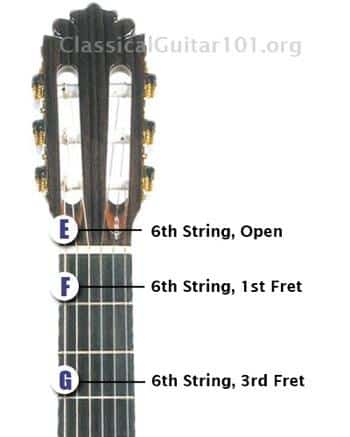
What if I told you that the position of the low E string can dramatically affect your overall sound? This seemingly simple detail resonates profoundly in how music comes to life. In my time with Acoustic Guitar magazine, I’ve often emphasized how string positioning can enhance both resonance and player comfort. Located as the uppermost string when holding the guitar in playing position, the low E string forms the foundation of your intonation and tuning. This starting point is crucial in guitar tuning, as every note, chord, and progression builds on the stability it provides. Mastering its position is not just about knowing where it sits, but understanding how its role can shape your sound, blending seamlessly into the intricate dance of melody and harmony.
Difference in Guitar Types

Did you know that the low E string sounds and responds differently on electric and acoustic guitars? Understanding these differences is crucial in mastering this vital string. From my work editing articles, I’ve seen many musicians overlook these nuances, which can significantly affect performance quality. On the electric guitar, the low E string often requires meticulous guitar maintenance to prevent unwanted buzzing due to its thinner build and lower tension. Conversely, the acoustic guitar’s design offers a fuller resonance, demanding adept control to prevent overpowering other strings during play. Each guitar type thus presents unique challenges and opportunities for expression. By appreciating these distinctions, you can adapt your techniques accordingly, ensuring optimal sound quality and enhancing your overall playing experience.
Why is Proper Tuning Essential?

As a guitarist, I’ve come to appreciate the critical role that proper tuning plays in musical expression. My journey in contemporary improvisation has taught me that even a slight detuning can significantly hinder creative flow during a performance. What happens when your guitar is out of tune? The answer might surprise you! It’s not just about sounding displeasing; improper tuning hampers the instrument’s natural intonation, disrupts the clarity of notes, and can lead to a muddy bass tone.
When your guitar is not in tune, it becomes difficult to maintain the harmonic balance essential for both solo performances and ensemble settings. This imbalance can result in unpredictable issues, making you fight against your own instrument instead of engaging with it fluidly. I’ve often observed that an out-of-tune guitar detracts from the emotional depth and complexity that well-tuned strings can offer. The low E string, in particular, serves as the foundation of your guitar’s tonality. If it’s not spot-on, your musical outputs will feel shaky, much like a house built on sand rather than rock.
The impact of improper tuning extends beyond personal performance challenges; it affects the listener’s experience too. If your instrument isn’t tuned precisely, it compromises the song’s integrity and colors your presentation, negatively influencing how your audience perceives your musicality. Keeping your guitar properly tuned ensures that your artistic intent is conveyed with authenticity and precision, allowing every chord and note to resonate as intended.
How to Tune the Low E String?
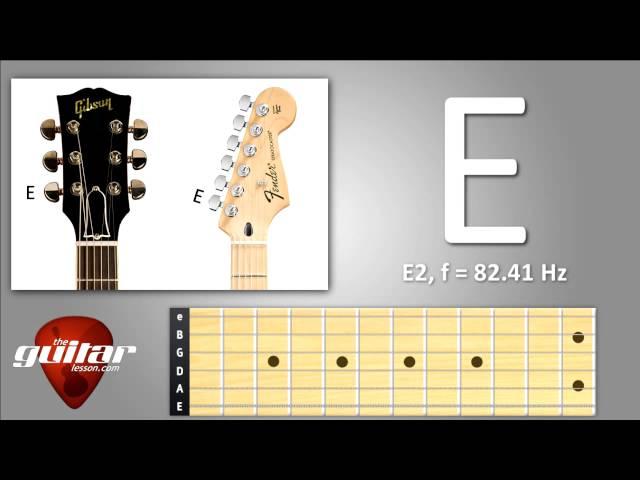
As an engraver and transcriber, I’ve developed a meticulous approach to tuning, ensuring every note resonates beautifully. The low E string can be particularly challenging; it’s often the foundation of any piece you play. Ever tuned your guitar and still found it sounds off? Let’s explore the right way to get that low E string perfectly in tune.
First, I always begin with my trusty tuner, whether it’s a clip-on, pedal, or a smartphone app. Ensuring that your tuner is calibrated correctly is crucial since even a minor discrepancy can alter the sound significantly. When focusing on the low E string, you want to ensure that the note rings true to a crisp, resonant E.
Here’s my step-by-step guide to tuning the low E string effectively. Begin by plucking the low E string open, letting it ring out fully. Watch the tuner carefully—if the indicator swings sharp or flat, adjust the tuning peg accordingly. Turn it gradually, allowing slight pauses to let the string settle into its new tension. This careful progression is key to preventing over-tightening and ensuring the string’s stability.
After tuning, play an E chord and listen for any discrepancies. Sometimes other strings can pull the low E out of balance, so quick adjustments may still be necessary. As you repeat this process, your ear will naturally hone in on that rich, harmonious sound we all strive for in our guitar tuning techniques.
Remember, mastering the low E string requires patience and precision. It sets the tone for your musical journey. With practice and these techniques, you’ll ensure that your guitar sings in perfect harmony every time.
What is String Action and How to Adjust It?
Checking String Action
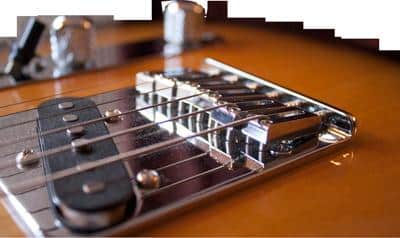
My hands-on experience with string setups has shown me that checking string action is often an overlooked yet essential step in guitar maintenance. How high or low should your strings be? Let’s find out! Ensuring the correct string action can significantly influence your playing comfort and sound quality. Within the broader topic of what string action is and how to adjust it, gauging the action involves measuring the height of the strings above the fretboard. This is crucial not only for achieving a smooth playing experience but also for preventing issues like fret buzz. By precisely measuring and adjusting the action, you’ll optimize your guitar’s performance, paving the way for effective playing and prolonged instrument longevity.
Adjusting String Action
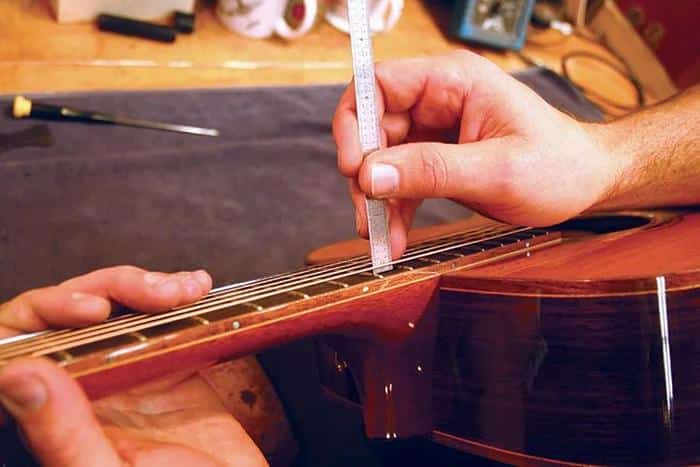
What if just a simple adjustment could improve your sound? It’s time to explore string height adjustments! Proper string action directly influences your guitar’s *playability* and overall *sound quality*. As the editor at ‘Acoustic Guitar,’ I’ve had the pleasure of guiding countless players in discovering their ideal string height, transforming their playing experience. When it comes to adjusting string action, the procedure is straightforward yet significantly impactful.
Begin by assessing your current string height at the 12th fret with a reliable ruler or an action gauge. Gradual changes in the saddle’s or truss rod’s height can address unwanted string buzzing. This simple technique can elevate your guitar’s performance, reducing strain and increasing comfort. Many players overlook this vital adjustment, but understanding its nuances can make all the difference in your technique.
After this adjustment, compare the playability and tone against your initial setup, ensuring each note rings out clearly without excessive buzz. Transitioning smoothly into the section on *fret buzz issues*, I guide you through pinpointing causes and offering solutions, further enhancing your mastery of the *Low E string*.
Fret Buzz Issues: Causes and Solutions
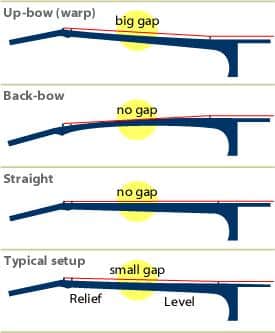
Ever been frustrated by that annoying buzz while playing? Let’s get to the root of fret buzz issues! Over the years, as I’ve explored the intricacies of sound quality in my articles, understanding fret buzz has become essential in guiding readers toward better playing. The *fret buzz* you hear, especially on the low E string, can be such a tone killer. But fear not, as identifying the causes and implementing effective *string buzzing solutions* can transform your playing experience.
From my experience, fret buzz often arises from *incorrect string action*. If the strings are set too low, they tend to vibrate against the frets, causing that irritating buzz. Uneven frets and an inadequately adjusted truss rod can also lead to this issue. By checking string height using a ruler or action gauge, you can ensure the action is just right. If adjustments are needed, slightly raising the bridge or balancing the truss rod might be necessary.
Additionally, *muting strings* properly can also be a useful technique to mitigate unwanted vibrations. Strategically using your picking hand’s palm to mute the strings or angling your fingertips precisely can eliminate excessive overtones. Mastering these techniques not only addresses fret buzz but also enhances your overall tone quality. Through these adjustments, your low E string can truly resonate, empowering your musical expression.
Best Practice Techniques for the Low E String
Fretting Techniques

Are you fretting properly? The way you press those strings can change everything. As we delve into the essence of *fretting techniques*, it’s crucial to understand how they fit within the broader context of *best practice techniques for the low E string*. Drawing from my experience in music theory, I’ve seen how the right fretting technique can greatly enhance tone and articulation. Precision is essential when fretting. Ensure your fingertips are pressing down just behind the fret—this location mitigates buzzing while optimizing the sustain.
When playing the low E, improper pressure can lead to unwanted *string buzz*, a common issue for beginners and seasoned players alike. Maintaining an appropriate angle with your fretting hand aids in *cleaner articulation* and helps avoid muffling adjacent strings. Additionally, practice *alternate fingerings* to determine what delivers the best sound and comfort. This foundational skill not only enriches your performance but also deepens your overall understanding of guitar dynamics. By grasping these nuances, you’ll find that your control over the sound improves markedly, allowing for expressive playing.
Building on fretting techniques, our next focus shifts to muting techniques, another critical aspect to master for achieving tonal clarity while playing the low E string.
Muting Techniques

What if muting could increase your playing’s clarity and power? As a guitarist, I’ve experimented with various muting techniques that not only enhance my sound but also improve the clarity of others in a jam setting. Effective muting strings is essential when mastering the Low E string to avoid unwanted resonance and bring focus to your playing.
To effectively mute while playing, I often use both left and right-hand techniques. The left-hand fingers lightly touch the strings, while the palm of my right hand softly rests on the bridge, controlling sustain and ensuring crisp note definition. This dual approach allows for greater precision and dynamic control.
Incorporating these muting strategies isn’t just about silence, it’s about shaping your music. This creates a foundation for further techniques like fretting, driving you toward mastering the Low E string. By adopting these practices, you transform a single note into a clear and powerful component of your musical expression, setting the stage for the depth of exploration found in fretting techniques.
Conclusion
Is the low E string the unsung hero of your music? As I reflect on my journey in guitar journalism, I’ve come to appreciate the low E string’s crucial role in both harmony and rhythm in guitar playing. This seemingly modest string holds the power to transform your sound, bringing depth and dimension to every chord.
Understanding the low E string not only involves mastering its *tuning* but also recognizing its significance across different guitar types. Proper tuning is essential for maintaining *guitar maintenance* and ensuring the best sound quality. By honing your skills in adjusting string action and resolving fret buzz, you pave the way for smoother playability and cleaner sound.
Moreover, strengthening your fretting and *muting techniques* will unleash the low E string’s full potential. Grasping these best practices has become a pivotal part of my guitar journey, revealing the expressive capabilities of this foundational string. Embrace the low E string, and you’ll enrich your music with new layers of texture and emotion.
FAQs

